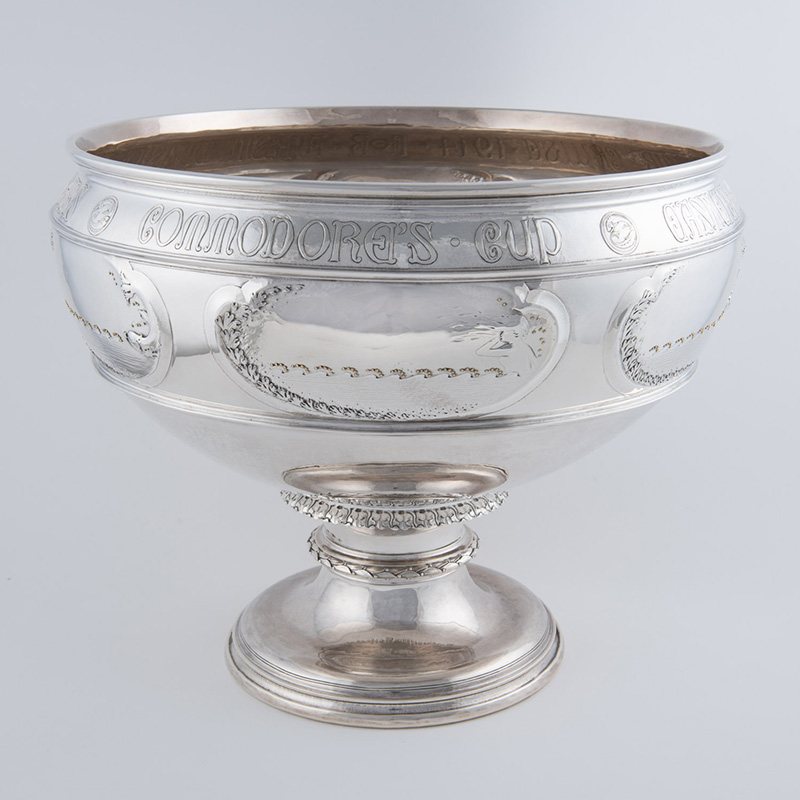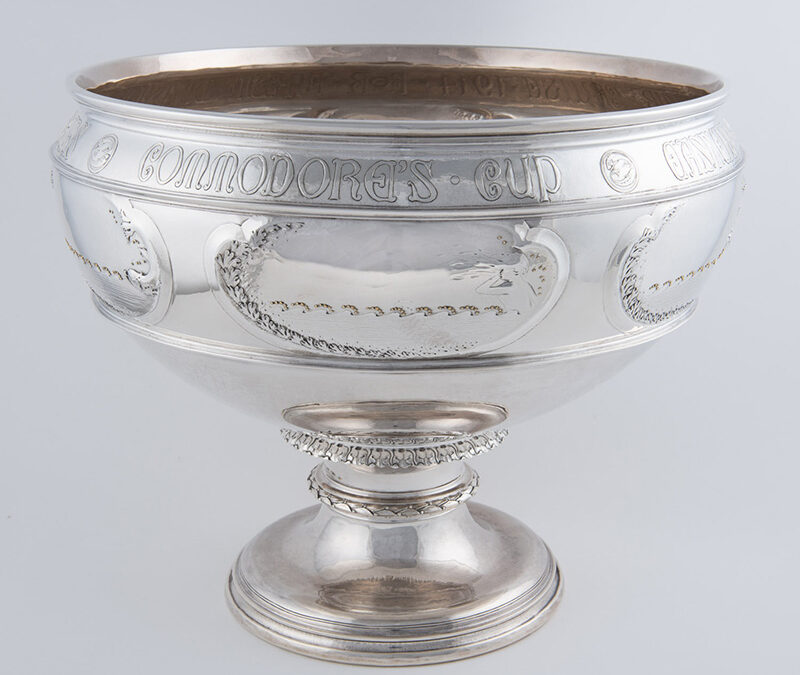
| Maker | Herbert A. Taylor (American, 1892–1942) and Arthur J. Stone (American, born England, 1847–1938) |
| Date of Creation | 1914 |
| Location | Gardner, Massachusetts |
| Materials | Silver, gold |
| Institution | The Preservation Society of Newport County |
| Credit Line | Gift of Gertrude Conaway Vanderbilt |
| Accession Number | PSNC.529 |
| Photo Credit | The Preservation Society of Newport County |
This exquisite silver and gold yachting trophy was crafted by silversmith Arthur J. Stone (American, born England, 1847–1938) and his leading craftsman Herbert A. Taylor (American, 1892–1942) in Stone’s workshop in Gardner, MA. It was commissioned by Commodore Herbert M. Sears for the Eastern Yacht Club of Marblehead, MA, in 1914 and awarded to Harold Stirling Vanderbilt for his victory in a first division schooners race that year. An inscription along the top rim reads “COMMODORE’S CUP EASTERN YACHT CLUB CRUISE 1914 FOR FIRST DIVISION SCHOONERS.” Stone and his team completed at least three racing trophies in the early 1910s for the Eastern Yacht Club under the auspices of the Boston Society of Arts and Crafts. The trophy takes the form of a punch bowl weighing 115 troy ounces with a ten-quart capacity. Oval ocean scenes decorate the perimeter, depicting mermaids or personifications of the Four Winds blowing spray-capped waves across the surface of the water. Tiny beads of gold represent the water’s spray. The hand-hammering seen across the object’s surface is indicative of the Arts and Crafts Movement, which embraced traditional techniques of handcraftsmanship over modern machine production. Arts and Crafts makers and reformers romanticized handwork as an honest expression of the maker’s individuality obscured by the machine. In the spirit of honoring individual craftsmen, Stone permitted his staff to sign the pieces they worked on. The underside of this trophy bears the hallmark of Taylor (“T”) as well as Stone’s hallmark, “A Stone / Sterling.” Stone’s business records indicate that Taylor spent 47.5 hours hand-raising the trophy and Stone labored on the piece for 135.5 hours, probably on the ornamentation.

